

SunSentinel Mention
Peter Moore, P.E., F.ASCE, FACEC
President, Chen Moore and Associates
As published by the Sun Sentinel on September 30, 2022
Last week: For Floridians, the story of the week was Hurricane Ian. For those of us that grew up on 1990s end-of-world disaster movies, though, the story of the week was NASA’s successful Double Asteroid Redirection Test (DART) mission relating to altering the trajectory of asteroid Dimorphos. While It will take days to weeks for astronomers to confirm whether DART accomplished its primary goal, which is to speed up the time Dimorphos takes to orbit its partner asteroid, Didymos, by perhaps 10 or more minutes, the mission to make contact with an object 11 million kilometers from Earth was achieved.
Looking ahead: Hurricane Ian is heading to Tampa … Tallahassee … Tampa … And then it ends up in Fort Myers. In the time following recovery and rebuilding, there will be much learned from the data collected and how it impacts the models used to predict the path and intensity of hurricanes. Similarly, engineers use past information to calculate the duration and intensity of rainfall to prevent loss of life from hurricanes and random December rainstorms. Collaboration between cities, counties, water management districts and other stakeholders helps put the big in “big data,” which continues to make predictions better — but not perfect.

CMA Donates to PEA Hurricane Fiona Relief Effort
Thank you to all our CMA staff who brought in supplies or made monetary donations to purchase supplies to benefit the Port Everglades Association (PEA) Hurricane Fiona relief effort. Our Senior Engineer David Castro, P.E. delivered a full SUV of supplies to the PEA collection site on September 27. Stay tuned for our upcoming news for our donation drive from Hurricane Ian.
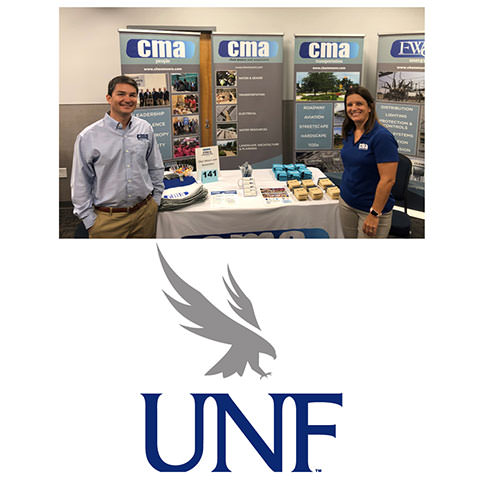
CMA Attended UNF STEM Construction Career Fair
On September 27, CMA Director of Energy Freeman Bass, P.E., Principal Engineer Tommy Gardner, P.E., Principal Engineer Jennifer Smith, P.E., and Principal Engineer Brad Wilson, P.E. staffed our booth at the University of North Florida STEM Construction Career Fair. The event was held at Adam W. Herbert University Center in Jacksonville and over 500 engineering students attended the event.
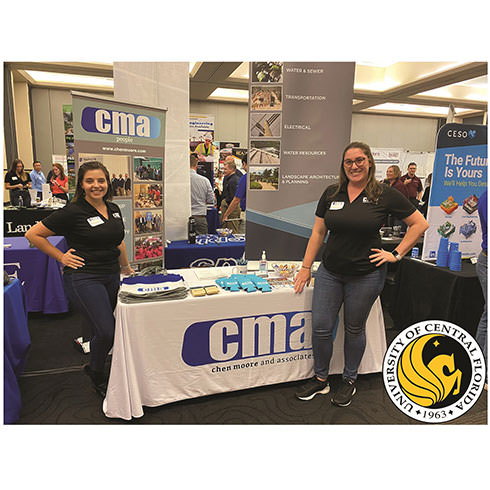
CMA Staff Attended UCF Career Mixer
On September 19, CMA Associate Engineer Madeline Batey, E.I. and Marketing Coordinator Stephanie Williams attended the UCF Civil, Environmental and Construction Engineering (CECE) Career Mixer. The CECE Career Mixer is an opportunity for students and employers in the Engineering industry to meet and network. Both Madeline and Stephanie are UCF Alumni, and were both excited to return to their alma mater and speak to the students about our firm and the industry!
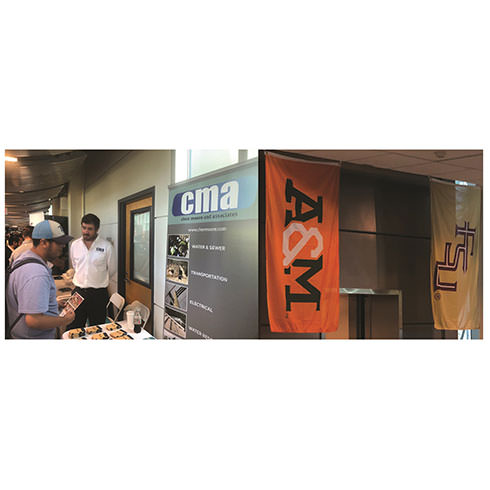
CMA Staffed Fall 2022 STEM Career Fair at FAMU/FSU
CMA Executive Vice President Jose L. Acosta, P.E., F.ASCE and Director of Energy Freeman Bass, P.E. staffed our booth at the Fall 2022 STEM Career Fair at Florida Agricultural and Mechanical University/Florida State University on September 20 in Tallahassee. Over 500 engineering students attended the event.
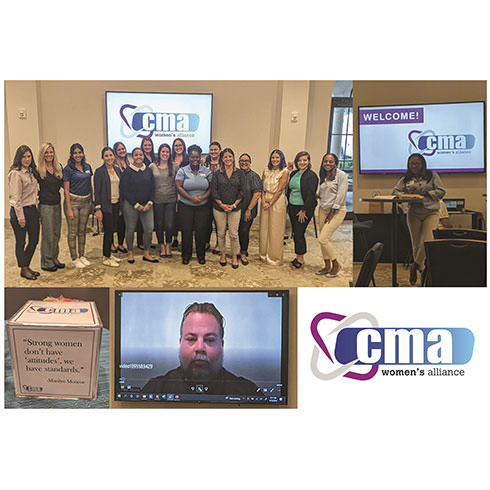
CMA Hosted Women’s Alliance Event for Staff
CMA held its Women’s Alliance Inaugural event on September 16 at the Hilton Garden Inn in Winter Park. The goal of the event was to encourage and empower our female staff members given our challenges in our industry. The event was led by Annetta Wilson, a certified mastery coach, certified trainer and speaker. The event included opening remarks by CMA Principal Engineer Safiya Brea, P.E., LEED AP and a welcome video from CMA President Peter Moore, P.E., F.ASCE, FACEC, followed by interactive group exercises that covered the topic ‘The Art of Networking.’ Following a lunch break, the afternoon session consisted of breakout sessions that covered the topic ‘Navigating Difficult Conversations and Elements of Dynamic Communication.’ CMA staff members who attended the event were Madeline Batey, E.I., Dominique Bethel, Jazmin Cruz, Melissa Dannelly, Melissa Deltoro, Jessica Diaz, P.E., Suzanne Dombrowski, P.E., ENV SP, Charmaine Emanuels, E.I., Maritza Figueroa, Daniela Martinat, P.E., Yulet Miguel, P.E., Karen Rachles, Jennifer Smith, P.E., Stephanie Williams and Johanna Zona.
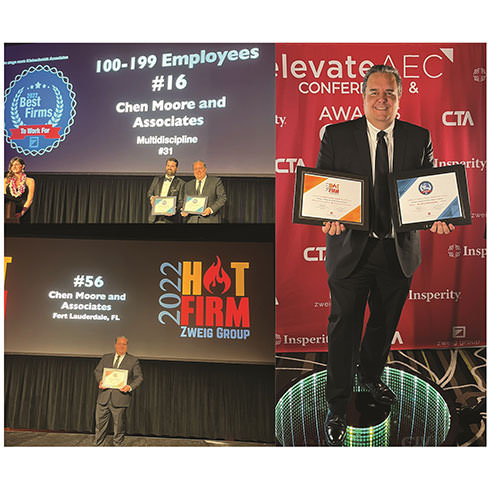
CMA Received Awards at Zweig Group ElevateAEC Conference & Awards Gala
CMA Executive Vice President Jose L. Acosta attended the 2022 Zweig Group ElevateAEC Conference & Awards Gala in Las Vegas September 14 – 16. CMA ranked number 56 on the Hot Firms list, an annual ranking of the 100 fastest-growing firms in the architecture, engineering, planning, and environmental consulting industry, up from #83 in 2021. We placed #16 Best Firm to Work For in A/E/C in North American in the 100-199 Employee Category, up from 17th in the 50-100 Employees category. CMA also placed #31 in the Multidiscipline Firm Category for the Best Firms to Work For in North America, up from #38 in 2021. Congratulations to the entire CMA Team! https://www.zweiggroup.com/

Happy National Cheeseburger Day~September 18~from CMA!

CMA Participates in School Supply Drive
The CMA community service team recently planned school supply drives for all offices to support local school drives. The Jacksonville office supported the Duval County School Drive, the Fort Lauderdale and Miami offices contributed to Voices for Children of Broward County Back to School Drive, the WPB office collected school supplies which benefited Palmetto Elementary School and the Orlando office participated of the ASCE YMF School Supply Drive for the East Central Branch.